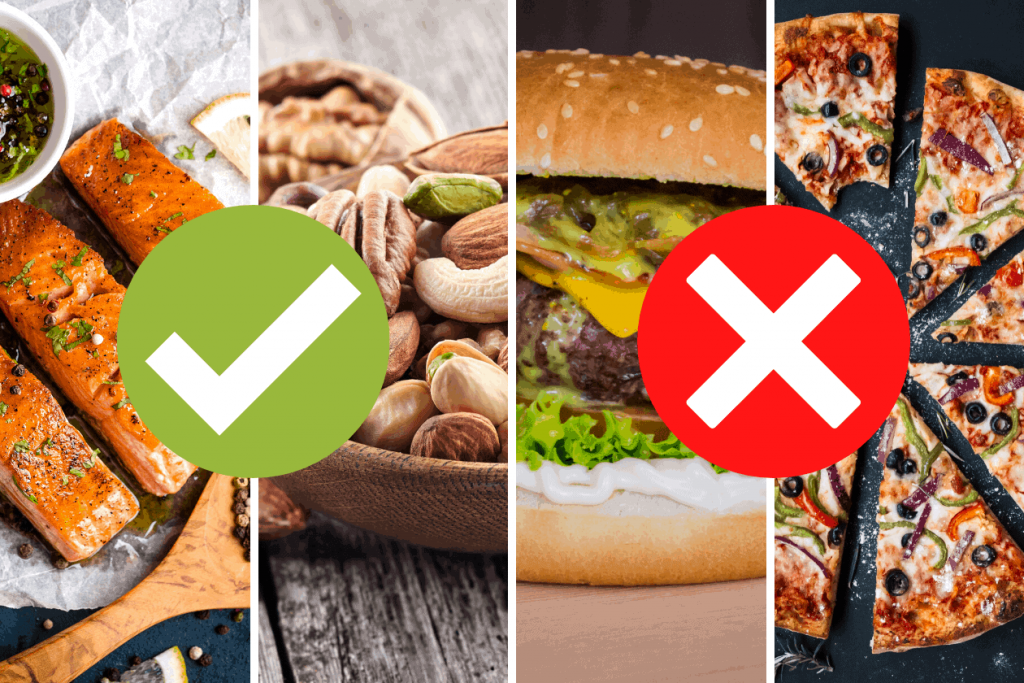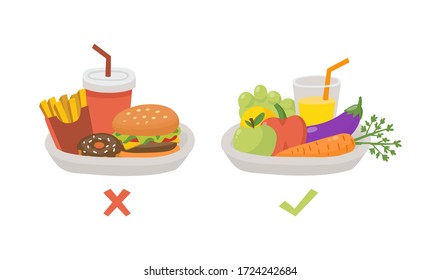
We are told processed meats are good for us, but they aren't. These meats contain a lot sodium, saturated fats, artificial sweeteners, and other harmful ingredients. These chemicals are very unhealthy and have no nutritional value. These substances can also contain chemicals such as sweeteners, artificial flavorings, and preservatives. These ingredients have been found to be dangerous for our health.
The USDA recommends you consume ground meat within two days after purchase. Ground meat contains bacteria that can be mixed throughout and cause food poisoning and other illnesses. Although it might seem tempting to eat ground steak right away, this is not a good idea. It is possible for bacteria to grow and multiply in food, making it even more dangerous to eat. Make sure to cook your meat well before you prepare it.
You shouldn't eat low-fat food. Low-fat versions are often filled with unhealthy ingredients, including added sugars and vegetable oils. These products can be as good or better than full-fat, but have less nutritional value and taste. Natural sweeteners should be preferred. These sweeteners can be used safely and have no calories. Just make sure you don't eat processed or fast foods!

The problem with processed meats is that they are laden with sodium and other additives. High-fructose, corn syrup, for instance, has a high concentration of sugar. It is also loaded with nitrates, which have been linked to a higher risk of cancer. It's easy to forget that pasteurization has killed good bacteria in milk. The extra calories and fats are not worth it.
It is possible to eat apples raw, but it is not recommended. These fruits' skins and peels are difficult to digest. Even though they are rich in potassium and folic acid, they shouldn't be consumed raw. Avocados are best when consumed whole. These fruits, vegetables are like candy bars to your body. You should not eat them raw. You should eat them cooked.
Pretzels can be found in New York City's Midtown. Cara Walsh is a nutritionist who warns these carbs are high in sugar and lacking nutrients. As a result, people tend to overeat them, which leads to a heightened risk of health problems. They are also not a good food for the health. It can still be great for calories.
There are many foods that you shouldn't eat. Salty and high-fat processed meats can be dangerous. These foods can cause blood vessel damage if consumed in excess. Prepackaged meals should be avoided, as well as processed meats. They are high sodium and can contain added sugars or preservatives. They can be very dangerous, even if they are frozen. These meals can not only be processed too much, but they are also high-calorie.

Furthermore, processed meats have a reputation for being unhealthy and should not ever be eaten. They can cause many health issues by containing high amounts of sugar and trans fats. When you decide to eat meat, make sure to choose organic products. For people with specific health issues, the latter is preferred. There are many fruits, vegetables, and other foods that are good for your health.
You should never eat hot dogs. They are made from dyed meat and contain artificial colors and flavorings. Pickled pigs' feet are made from chopped hooves and soaked in brine. Chitlins refer to deep-fried intestines of pigs. Spam is a delicacy that's made of pork bits encased in gelatin. Apart from this, there are other foods you should not ingest.
Fried foods can also be dangerous. They contain high amounts sodium and saturated oil. It's better to stick with natural foods. People may not realize that low-quality or flavored food can cause health problems. A bad choice of food can also lead to weight gain, which can be a problem for the joints. Sugar and salt are both "usual suspects". Even though they look good, processed and fried foods can be bad for your heart.
FAQ
What are the best 10 foods to eat?
These are 10 of the best foods to eat.
-
Avocados
-
Berries
-
Broccoli
-
Cauliflower
-
Eggs
-
Fish
-
Grains
-
Nuts
-
Oats
-
Salmon
How do I count calories?
You may be wondering "what is the best diet for you?" or "is counting calories necessary?" It depends on many factors such as your current health, personal goals, preferences, and overall lifestyle.
The Best Diet for Me - Which One is Right For You?
The best diet for me depends on my current health status, my personal goals, my preferences, and my overall lifestyle. There are many diets available, some good and others not so good. Some work well for certain people while others don't. So what do I do? How can I make the right choice?
This article aims at answering these questions. The article starts by introducing the many types of diets currently available. Then, the pros and cons of each type of diet are discussed. Finally, we'll discuss which one is best.
Let's begin by briefly reviewing the different types and diets.
Diet Types
There are three main types, low fat, high protein, or ketogenic diets. Let's look at each one briefly.
Low Fat Diets
A low-fat diet restricts fat intake. This is done through reducing the intake of saturated fats (butter, cream cheese, etc.) It is possible to replace these saturated fats with unsaturated ones (olive oil or avocados). Low fat diets are often recommended to those who wish to lose weight quickly. This diet can cause problems such constipation as heartburn, indigestion, and even stomach pain. In addition, it may lead to vitamin deficiencies if a person doesn't get enough vitamins from their food.
High Protein Diets
High protein diets are known to restrict carbohydrate intake and promote the consumption of proteins. These diets typically have more protein than other diets. They are meant to help build muscle mass and burn more calories. However, they might not provide enough nutrition for those who need to eat frequently. They can also be very restrictive so they may not be suitable for everyone.
Ketogenic Diets
Ketogenic diets are also known as keto diets. They are high on fat but low in carbs and proteins. They are commonly used by athletes and bodybuilders, as they allow them train harder and more frequently without getting tired. However, they must be used with caution to avoid nausea, headaches and fatigue.
What is the best way to live a healthy lifestyle?
Healthy lifestyles include eating healthy food, regular exercise, good sleep, and avoiding stress. These guidelines will help you live a long, healthy life.
Start small by changing your diet and exercising routine. Try walking for 30 minutes each day to lose weight. Swimming or dancing are great options if your goal is to become more active. An online fitness program such as Strava or Fitbit that tracks your activity could be a good option.
How does an antibiotic work?
Antibiotics are drugs which destroy harmful bacteria. Antibiotics are used to treat bacterial infections. There are many kinds of antibiotics. Some can be taken orally while others are injected. Others are topically applied.
People who have been exposed may be prescribed antibiotics. An oral antibiotic might be prescribed to someone who has been exposed to chicken pox. This will prevent the spread of shingles. Penicillin might also be administered to someone with strep throat. This will help prevent the possibility of developing pneumonia.
A doctor should give antibiotics to children. Children are more susceptible to side effects from antibiotics than adults.
The most common side effect of antibiotics is diarrhea. Other side effects that could occur include nausea, vomiting and dizziness. These side effects usually disappear once treatment has ended.
Supplements and herbs can improve immunity
Herbs and natural remedies can be used to boost immune function. Ginger, garlic, ginger, echinacea and ginkgo biloba are some of the most common.
However, these herbal remedies should not replace conventional medical treatment. Side effects include nausea, diarrhea and stomach cramps, headaches and dizziness.
What is the problem?
BMI stands For Body Mass Index. This refers to the measurement of body fat using height and weight. The following formula is used to calculate BMI:
Add weight in kilograms to height in meters squared.
The score is expressed as a number between 0 and 25. A score of 18.5 or higher indicates overweight, while a score of 23 or higher indicates obesity.
A person who weighs 100 kilograms and is 1.75m tall will have an BMI of 22.
How do you measure body fat?
A Body Fat Analyzer will give you the most accurate measurement of body fat. These devices are used to measure body fat for people who want weight loss.
Statistics
- This article received 11 testimonials and 86% of readers who voted found it helpful, earning it our reader-approved status. (wikihow.com)
- WHO recommends consuming less than 5% of total energy intake for additional health benefits. (who.int)
- Extra virgin olive oil may benefit heart health, as people who consume it have a lower risk for dying from heart attacks and strokes according to some evidence (57Trusted Source (healthline.com)
- The Dietary Guidelines for Americans recommend keeping added sugar intake below 10% of your daily calorie intake, while the World Health Organization recommends slashing added sugars to 5% or less of your daily calories for optimal health (59Trusted (healthline.com)
External Links
How To
What does the term "vitamins" mean?
Vitamins can be described as organic compounds found in food. Vitamins allow us to absorb nutrients from food. Vitamins cannot be made by the body; they must be taken from food.
There are two types if vitamins: water soluble, and fat soluble. Water-soluble vitamins dissolve easily when they are dissolved in water. Vitamin C,B1(thiamine), B2 (2riboflavin), and B3 (3niacin), as well as vitamin C,B1, B2 (riboflavin), and B3 (niacin), vitamin B6 (pyridoxine), vitamin folic acid (biotin), pantothenic, and choline are examples. The liver and fat soluble vitamins are stored within the liver and in fatty tissue. Examples include vitamin D, E, K, A, and beta carotene.
Vitamins are classified based on their biological activity. There are eight major categories of vitamins.
-
A - Essential for healthy growth and health maintenance.
-
C is important for nerve function and energy production.
-
D - Essential for healthy teeth and bones.
-
E is required for good vision and reproduction.
-
K - Required for healthy nerves and muscles.
-
P - vital for building strong bones andteeth.
-
Q – aids digestion of iron and iron absorption
-
R - necessary for making red blood cells.
The recommended daily allowance for vitamins (RDA) varies based on gender, age, and physical conditions. The U.S. Food and Drug Administration, (FDA), sets the RDA value.
For adults over 19, the RDA for vitaminA is 400 micrograms per daily. However, pregnant women need 600 micrograms per day because it is important for fetal development. Children ages 1-8 require 900 micrograms per day. Infants under one year of age require 700 micrograms per day, but this amount decreases to 500 micrograms per day between 9 months and 12 months of age.
Children aged between 1-18 years require 800 micrograms of sugar per day, while overweight children need 1000 micrograms. Children who are underweight receive 1200 micrograms every day to meet their nutritional requirements.
Children ages 4-8 years who have been diagnosed with anemia need 2200 micrograms per day of vitamin C.
2000 micrograms are required daily for good health in adults over 50. Due to their increased nutrient needs, pregnant and breastfeeding women need 3000 micrograms daily.
1500 micrograms is the recommended daily intake for adults aged 70+, who lose approximately 10% of muscle each year.
Women who have been pregnant or are lactating require more than the RDA. Pregnant and breastfeeding women require 4000 micrograms each day during pregnancy and 2500 Micrograms each day after delivery. Breastfeeding mothers need 5000 micrograms per day when breast milk is being produced.